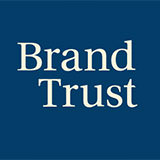
Mass tourism in the Alps is reaching its limits. It must be replaced by quality tourism.
No more counting beds – the future of winter tourism lies in added value
Article
28. February 2011 ▪ Reading time: approx. 2:40 min.
Since early December 2010, potential guests and skiers in Alpine winter sports locations are seeing huge fireworks of advertising: Every radio station is airing it, otherwise drab billboards are festooned with gloriously glittering snowy landscapes, and on the web it is all but impossible to escape the alpine advertising avalanche. After the two years of crisis, tourism managers want to use the new winter season to make up for their losses. But that's not enough: Local tourism marketers are also pulling out all the stops. There are events for everyone. From new party concepts to new or novel snow sports – they'll try anything that might bring new guests. The winter destinations are waging a battle for... – well, for whom or what, really?
If you look at the ad images more closely, you'll find: They are all the same. Snow/sun pictures, usually with a lone skier making tracks in fresh powder. In the background snowy forests and/or craggy rock walls. Lift ads of course proudly present their technology: the brand new 8-person gondola (now with heated seats...).
We have all known these messages inside and out since the start of alpine mass tourism in the 1960s. Why has the advertising of winter destinations remained the same all this time? It is remarkable, because a lot has changed since then: Winter locations are competing with new long-distance destinations, with flights to the Caribbean that cost less than a tank of gas to head for the mountains. The hot topics are climate change, natural destruction, economic crises, polarization of society, and the death of the middle class.
So, do the convictions and methods of many tourism managers and their agencies – despite all the advanced training opportunities – really date back to the last century? They must recognize that their interchangeable advertising efforts are making their marketing inefficient. To find the reason for this behavior, we have to dig deeper: we have to ask what criteria are used to evaluate the work of tourism associations. Answer: Success is measured by one single core criterion – the number of overnight stays.
And that is precisely the problem: the topographical, climatic, natural and cultural limitations of the Alpine regions do not allow for any more beds and mass growth. The future of Alpine tourism can therefore lie only in quality tourism. We don't mean just 4 or 5 star tourism, but quality tourism in its purest form: an outstanding value-for-money ratio for the guest that keeps him from travelling to far-flung destinations; a value-for-money ratio that seduces him to take advantage of as many local offers as possible and happily spend more money. The key figure for success would then be not just the number of guests, but the added value per guest. In other sectors such as telecommunication, the ARPU (average revenue per user) has already been established as the key indicator of success.
The advantages of this shift are of enormous significance for tourism marketing:
Specific target group communication moves to the foreground, clear positioning on lifestyle or life scarcities becomes possible. The first progressive measures of this kind can be observed in the marketing for Kitzbühel, St. Moritz, Ischgl, and Fiss Ladis Serfaus.
The panicked and usually rather dimwittedly-fought price battle, which only serves to confuse guests and makes offers interchangeable, is reduced to the necessary minimum.
The guest will be able to choose from among offers that are equivalent, sharply conceptualized, and most of all tailored to his needs, instead of worrying about booking to soon and missing out on the next bargain offer.
For brand management, the logical consequence of all this is that brands must no longer be expanded, but focused. That means: not being known to as many people as possible is the measure of success, but the ability to systematically increase desirability – with offers and new messages that attract people because they do not promise "more of the same".
Consistent focus on added value per guest benefits all service providers at a destination. It allows for margins that can be used for investment in sustainable technologies, development of new offers, modernization, and many other sustainability projects to further increase desirability and become indispensable as a destination. This creates a future for all: for the service providers of the destination, their successors, employees of the businesses, the state through taxes and duties, and ultimately those it should all be about: the guests.
In our study "TOP 40 der begehrtesten Wintersport-Destinationsmarken der Alpen 2010" (Top 40 most popular destination brands in the Alps 2010), we found out which destinations in the Alpine region are currently particularly popular. Further information is also available in the article "Attraktivste Wintersport-Orte mehrheitlich in der Schweiz" (Most attractive winter destinations primarily in Switzerland) published by economy magazine "Absatzwirtschaft".













